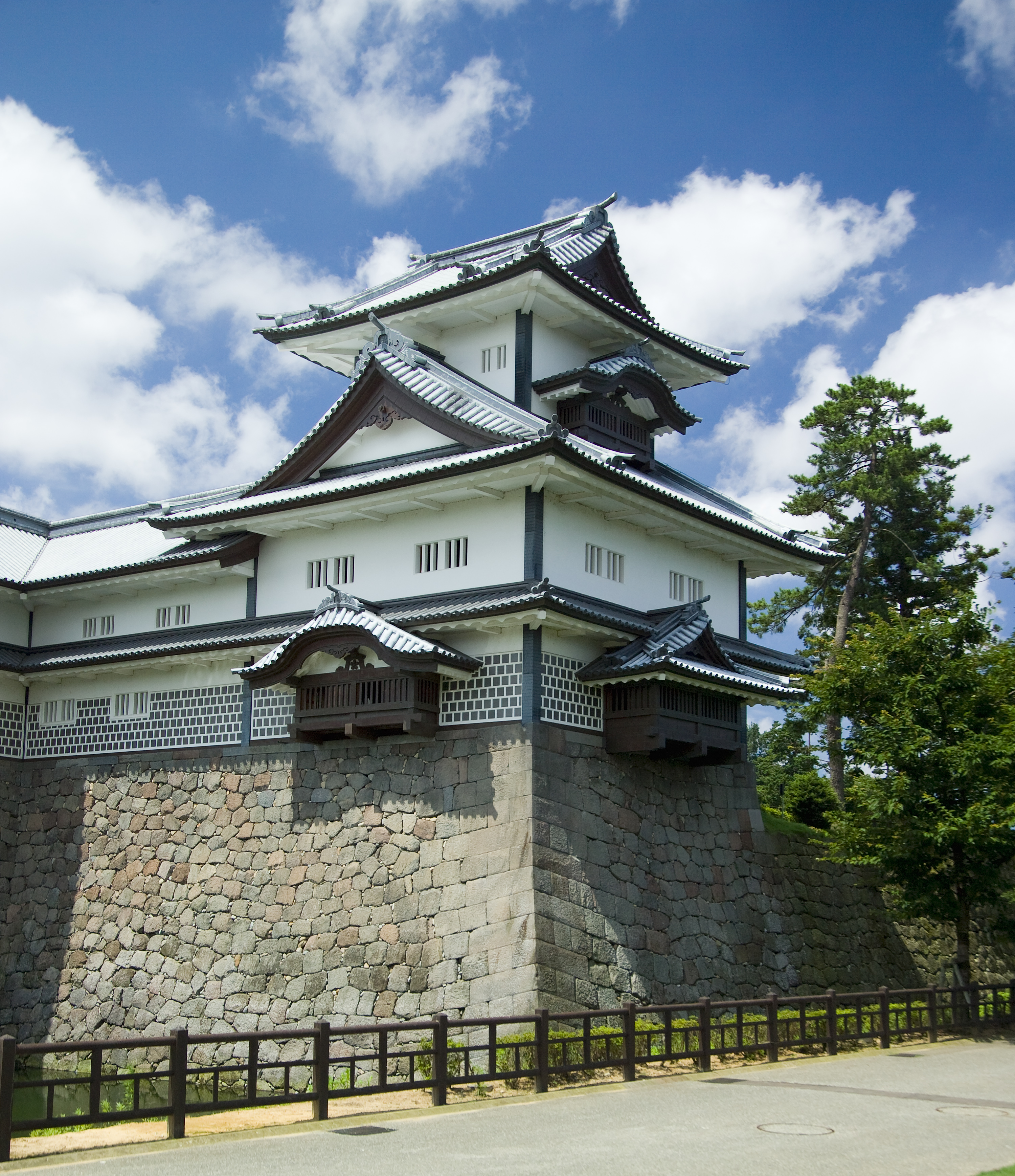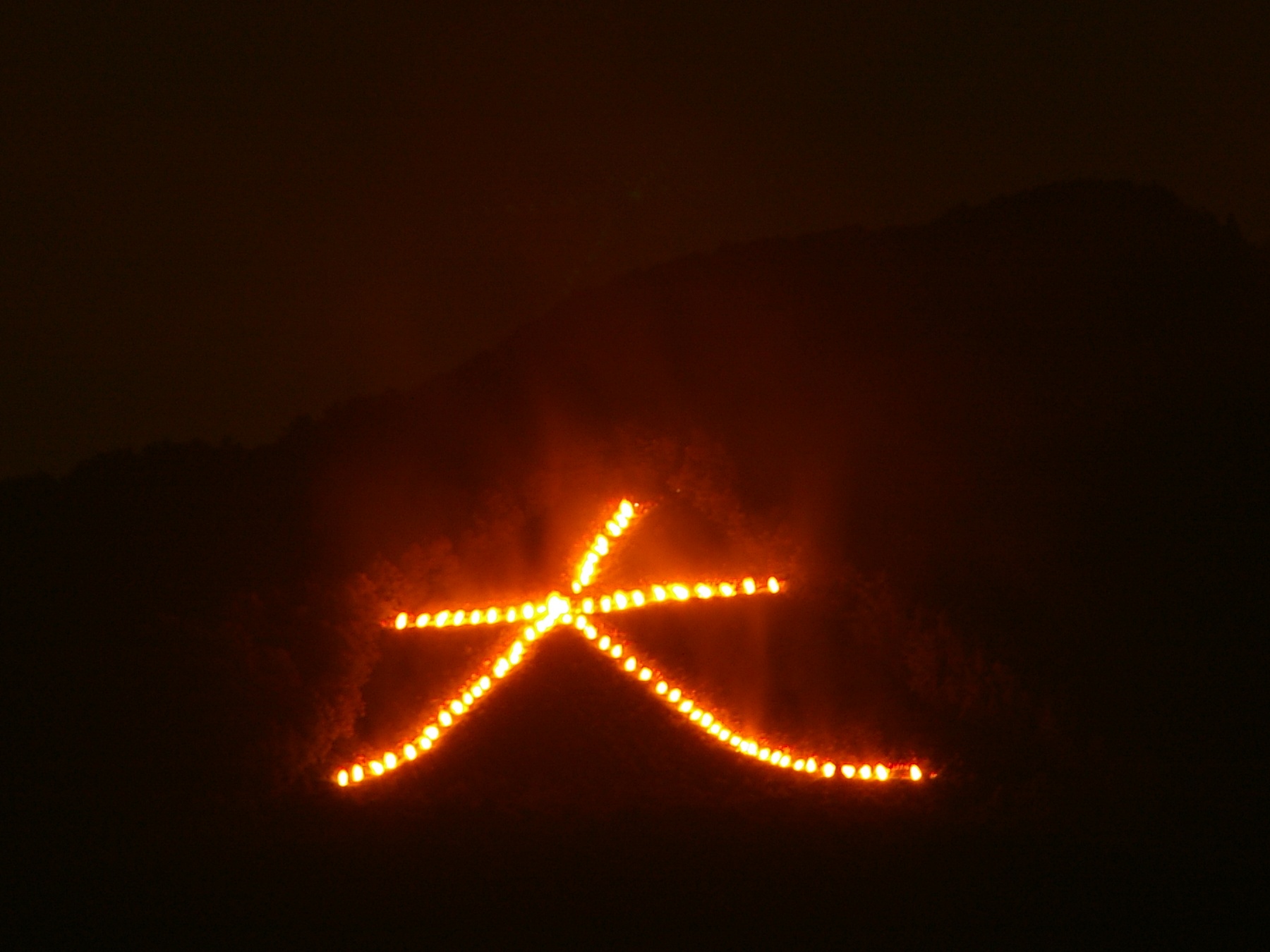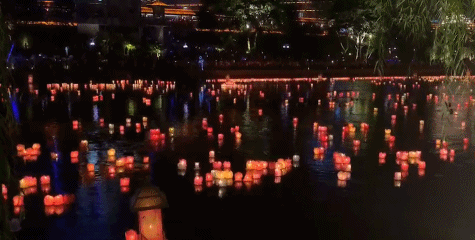|
Hyakumangoku Matsuri
The Hyakumangoku Matsuri (百万石まつり) is the main annual festival taking place in Kanazawa, Japan. The festival commemorates the entry of Lord Maeda Toshiie into Kanazawa Castle in 1583. The highlight of the festival is the Hyakumangoku Parade, which has begun on the first Saturday in June since 2007. The Hyakumangoku Parade reenacts the entrance of Lord Maeda Toshiie and his entourage into Kanazawa. The participants are dressed in 16th-century period costumes and parade around several city blocks. The name ''Hyakumangoku'' refers to rice production. ''Hyakuman'' means "1,000,000" (literally "100 10,000") and the '' koku'' is a measurement of rice production. 1,000,000 koku is around 150,000 tonnes or 5,000,000 bushels of rice. In the evening after the main parade there are Bon Festival dances starting from 19.00 h and ending late in the night. Employees from different companies wear different kimono, but anyone can join the dances. The traditional Japanese dance along th ... [...More Info...] [...Related Items...] OR: [Wikipedia] [Google] [Baidu] |
Kanazawa, Ishikawa
is the capital Cities of Japan, city of Ishikawa Prefecture, Japan. , the city had an estimated population of 466,029 in 203,271 households, and a population density of 990 persons per km2. The total area of the city was . Overview Cityscape File:もてなしドーム3.jpg, Kanazawa Station(2013) File:Omichoichibakan004.jpg, Ōmichō-Market(Ōmichō-Ichiba)(2013) File:Kanazawa view from Utatsuyama Park.jpg, Skyline of Kanazawa City(2017) File:Cityscape at downtown Kanazawa.jpg, Central Business District, CBD of Kanazawa File:Katamachi Crossing.jpg, Downtown of Katamachi Area (2022) Geography Kanazawa is located in north-western Ishikawa Prefecture in the Hokuriku region of Japan and is bordered by the Sea of Japan to the west and Toyama Prefecture to the east. The city sits between the Sai River (Ishikawa), Sai and Asano river, Asano rivers. The eastern portion of the city is dominated by the Japanese Alps. Parts of the city are within the borders of the H ... [...More Info...] [...Related Items...] OR: [Wikipedia] [Google] [Baidu] |
Japan
Japan ( ja, 日本, or , and formally , ''Nihonkoku'') is an island country in East Asia. It is situated in the northwest Pacific Ocean, and is bordered on the west by the Sea of Japan, while extending from the Sea of Okhotsk in the north toward the East China Sea, Philippine Sea, and Taiwan in the south. Japan is a part of the Ring of Fire, and spans Japanese archipelago, an archipelago of List of islands of Japan, 6852 islands covering ; the five main islands are Hokkaido, Honshu (the "mainland"), Shikoku, Kyushu, and Okinawa Island, Okinawa. Tokyo is the Capital of Japan, nation's capital and largest city, followed by Yokohama, Osaka, Nagoya, Sapporo, Fukuoka, Kobe, and Kyoto. Japan is the List of countries and dependencies by population, eleventh most populous country in the world, as well as one of the List of countries and dependencies by population density, most densely populated and Urbanization by country, urbanized. About three-fourths of Geography of Japan, the c ... [...More Info...] [...Related Items...] OR: [Wikipedia] [Google] [Baidu] |
Maeda Toshiie
was one of the leading generals of Oda Nobunaga following the Sengoku period of the 16th century extending to the Azuchi–Momoyama period. His preferred weapon was a yari and he was known as "Yari no Mataza" (槍の又左), Matazaemon (又左衛門) being his common name. He was a member of the so-called Echizen Sanninshu (Echizen Triumvir) along with Sassa Narimasa and Fuwa Mitsuharu. The highest rank from the court that he received is the Great Counselor ''Dainagon'' ( 大納言). Early life His father was Maeda Toshimasa and his wife was Maeda Matsu. His childhood name was "Inuchiyo" (犬千代). Toshiie was born in the village of Arako (present-day Nakagawa-ku, Nagoya), He was the fourth of seven brothers, of Maeda Toshimasa, who held Arako Castle. Toshiie served Oda Nobunaga from childhood (first as a page) and his loyalty was rewarded by being allowed to be the head of the Maeda clan, very unusual for a fourth son with no apparent failures among his elder brothers. Jus ... [...More Info...] [...Related Items...] OR: [Wikipedia] [Google] [Baidu] |
Kanazawa Castle
is a large, partially-restored Japanese castle in Kanazawa, Ishikawa Prefecture, Japan. It is located adjacent to the celebrated Kenroku-en Garden, which once formed the castle's private outer garden. It was the headquarters of Kaga Domain, ruled by the Maeda clan for 14 generations from the Sengoku period until the coming of the Meiji Restoration in 1871. History During the late Muromachi period, the ''Ikkō-ikki'', followers of the teachings of priest Rennyo, of the Jōdo Shinshū sect, displaced the official governors of Kaga Province, the Togashi clan, and established a kind of theocratic republic later known as " The Peasants' Kingdom". Their principal stronghold was the Kanazawa Gobō, a fortified temple complex on the tip of the Kodatsuno Ridge. Backed by high hills and flanked on two sides by rivers, it was a natural fortress, around which a castle town developed. This was the start of what would become the city of Kanazawa. In 1580, Oda Nobunaga sent his general Sakuma ... [...More Info...] [...Related Items...] OR: [Wikipedia] [Google] [Baidu] |
Rice
Rice is the seed of the grass species ''Oryza sativa'' (Asian rice) or less commonly ''Oryza glaberrima ''Oryza glaberrima'', commonly known as African rice, is one of the two domesticated rice species. It was first domesticated and grown in West Africa around 3,000 years ago. In agriculture, it has largely been replaced by higher-yielding Asian r ...'' (African rice). The name wild rice is usually used for species of the genera ''Zizania (genus), Zizania'' and ''Porteresia'', both wild and domesticated, although the term may also be used for primitive or uncultivated varieties of ''Oryza''. As a cereal, cereal grain, domesticated rice is the most widely consumed staple food for over half of the world's World population, human population,Abstract, "Rice feeds more than half the world's population." especially in Asia and Africa. It is the agricultural commodity with the third-highest worldwide production, after sugarcane and maize. Since sizable portions of sugarcane and ma ... [...More Info...] [...Related Items...] OR: [Wikipedia] [Google] [Baidu] |
Koku
The is a Chinese-based Japanese unit of volume. 1 koku is equivalent to 10 or approximately , or about . It converts, in turn, to 100 shō and 1000 gō. One ''gō'' is the volume of the "rice cup", the plastic measuring cup that is supplied with commercial Japanese rice cookers. The ''koku'' in Japan was typically used as a dry measure. The amount of rice production measured in ''koku'' was the metric by which the magnitude of a feudal domain (''han'') was evaluated. A feudal lord was only considered ''daimyō'' class when his domain amounted to at least 10,000 ''koku''. As a rule of thumb, one ''koku'' was considered a sufficient quantity of rice to feed one person for one year. The Chinese equivalent or cognate unit for capacity is the ''shi'' or ''dan'' ( also known as ''hu'' (), now approximately 103 litres but historically about . Chinese equivalent The Chinese ''shi'' or ''dan'' is equal to 10 ''dou'' () " pecks", 100 ''sheng'' () "pints". While the current ''shi' ... [...More Info...] [...Related Items...] OR: [Wikipedia] [Google] [Baidu] |
Tonne
The tonne ( or ; symbol: t) is a unit of mass equal to 1000 kilograms. It is a non-SI unit accepted for use with SI. It is also referred to as a metric ton to distinguish it from the non-metric units of the short ton ( United States customary units), and the long ton ( British imperial units). It is equivalent to approximately 2204.6 pounds, 1.102 short tons, and 0.984 long tons. The official SI unit is the megagram (symbol: Mg), a less common way to express the same mass. Symbol and abbreviations The BIPM symbol for the tonne is t, adopted at the same time as the unit in 1879.Table 6 . BIPM. Retrieved on 2011-07-10. Its use is also official for the metric ton in the United States, having been adopted by the United States |
Bushel
A bushel (abbreviation: bsh. or bu.) is an imperial and US customary unit of volume based upon an earlier measure of dry capacity. The old bushel is equal to 2 kennings (obsolete), 4 pecks, or 8 dry gallons, and was used mostly for agricultural products, such as wheat. In modern usage, the volume is nominal, with bushels denoting a mass defined differently for each commodity. The name "bushel" is also used to translate similar units in other measurement systems. Name The name comes from the Old French ' and ', meaning "little box".. It may further derive from Old French ', thus meaning "little butt". History The bushel is an intermediate value between the pound and ton or tun that was introduced to England following the Norman Conquest. Norman statutes made the London bushel part of the legal measure of English wine, ale, and grains. The Assize of Bread and Ale credited to Henry III, , defined this bushel in terms of the wine gallon,. & while th ... [...More Info...] [...Related Items...] OR: [Wikipedia] [Google] [Baidu] |
Bon Festival
or just is fusion of the ancient Japanese belief in ancestral spirits and a Japanese Buddhist custom to honor the spirits of one's ancestors. This Buddhist–Confucian custom has evolved into a family reunion holiday during which people return to ancestral family places and visit and clean their ancestors' graves when the spirits of ancestors are supposed to revisit the household altars. It has been celebrated in Japan for more than 500 years and traditionally includes a dance, known as . The festival of Obon lasts for three days; however, its starting date varies within different regions of Japan. When the lunar calendar was changed to the Gregorian calendar at the beginning of the Meiji era, the localities in Japan responded differently, which resulted in three different times of Obon. (Bon in July) is based on the solar calendar and is celebrated around the 15th of July in eastern Japan (Kantō region such as Tokyo, Yokohama and the Tōhoku region), coinciding with . (B ... [...More Info...] [...Related Items...] OR: [Wikipedia] [Google] [Baidu] |
Tourou Nagashi
The Floating Lamp is a type of lamp that floats on the surface of the water. It is also known as a river lamp or lake lamp etc., depending on the water body in which the water lamp is floated. The water lamp originated in India and later spread to Southeast Asia and East Asia due to influence of Hindu-Buddhist cultural diffusion. South Asia and Southeast Asia The water lamps in the Indian culture is seen in various traditional festivals and sacrifices, especially the festivals on the full moon day or Purnimas like the festivals on Kartik Purnima, across South and Southeast Asia including the Vesak Day, Deepavali, Boita Bandana, Loi Krathong, Bon Om Touk, Songkran Festival, Lantern Festival, Mid-Autumn Festival, Water Festival, etc., have simple lamps and are made of plant materials such as flowers and leaves. The main meaning of the water lights in these areas is to worship the gods, send away the disasters, and welcome happiness. Some young men and women will also pray for ... [...More Info...] [...Related Items...] OR: [Wikipedia] [Google] [Baidu] |
Asano
Asano (written: 浅野, or hiragana あさの) is a Japanese language surname. Notable people with the surname include: * Asano clan, samurai family in feudal Japan. ** Asano Naganori, Important historical figure title: Takumi no Kami ** Asano Nagaakira, samurai ** Asano Nagamasa, samurai **Asano Nagakoto, last daimyō **Asano Yukinaga, samurai **Asano Naganao, Edo period daimyō **Asano Nagatomo, Edo period daimyō *Aiko Asano, actress and singer *Atsuko Asano, actress *Atsuko Asano (writer) *, Japanese male volleyball player *Inio Asano, manga artist * Kevin Asano, retired judoka from the United States *Koji Asano, musician and composer * Masumi Asano, voice actress *Mayumi Asano, voice actress *, Japanese swimmer *Rin Asano, manga artist of ''Deaimon'' *Shirō Asano (professor), Japanese professor and political commentator *Sōichirō Asano, businessman * Tadanobu Asano, actor *Takuma Asano, footballer *, Japanese ''daimyō'' *, Japanese footballer Fictional characters *Rin ... [...More Info...] [...Related Items...] OR: [Wikipedia] [Google] [Baidu] |
Kenroku-en
Kenroku-en (兼六園, Six Attributes Garden), located in Kanazawa, Ishikawa, Japan, is an old private garden. Along with Kairaku-en and Kōraku-en, Kenroku-en is one of the Three Great Gardens of Japan. The grounds are open year-round except for December 29 through January 3 during daylight hours and famous for its beauty in all seasons; an admission fee is charged. History Kenroku-en was developed from the 1620s to the 1840s by the Maeda clan, the ''daimyōs'' who ruled the former Kaga Domain. While the date of initial development of the garden that would become known as Kenrokuen is rather unclear, one version of the garden's origins can perhaps be marked by the completion of the Tatsumi water channel in 1632 by Maeda Toshitsune, the third ''daimyō'' of the powerful Maeda clan and ruler of the Kaga Domain from 1605 to 1639, as this feature would be later incorporated into creating the garden's twisting waterways in 1822. Conversely, in other versions of the garden's incep ... [...More Info...] [...Related Items...] OR: [Wikipedia] [Google] [Baidu] |







